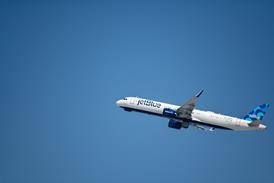Excel-Jet is suing the US Federal Aviation Administration for the 22 June 2006 crash of its four-passenger Williams FJ33-powered Sport-Jet immediately after take-off at Colorado Springs municipal airport. The aircraft had accumulated 24h of "virtually flawless flight testing" before the crash, according to Excel-Jet president Bob Bornhofen.
The company contends that FAA air traffic controllers violated "mandatory separation requirements" by clearing the aircraft to take off shortly after an Air Shuttle de Havilland Dash 8-200 twin-engined turboprop had left the same runway, exposing the light jet to wake vortices.
The pilot reported that the aircraft rolled left immediately after becoming airborne and the roll rate did not stop despite application of opposite aileron. Witnesses said the airplane rolled "hard left" at approximately 15ft (4.5m) above the ground and began to "cartwheel" down the runway. The pilot and a passenger were injured in the accident.
National Transportation Safety Board investigators say it is "most likely" that the wake vortices "were neither strong enough nor close enough to [the aircraft] to cause the violent roll to the left reported by the witnesses to the accident".
Investigators reported that Excel-Jet modified the aircraft's aileron control system the day before the accident, replacing a gear "to produce a lighter aileron while in flight".
Source: Flight International























